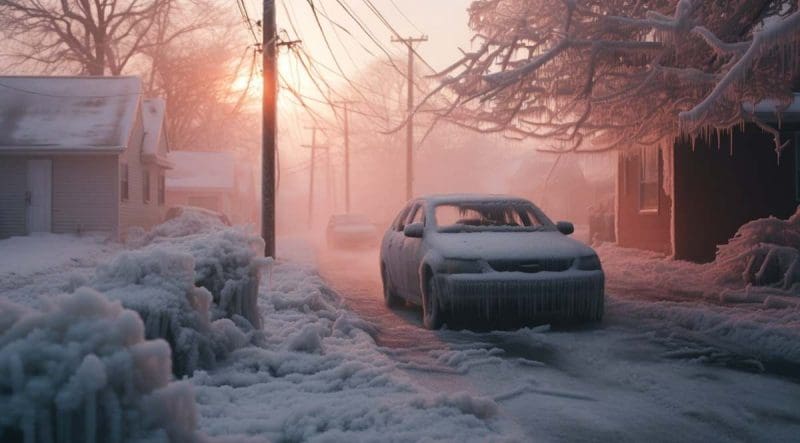
In the depths of winter 2024, the United States is grappling with a severe Arctic blast, bringing dangerously low temperatures and unprecedented cold from the Canadian border down to the Mexican border.
This article delves into the various aspects of this climatic phenomenon, examining its causes, impacts, and the response of infrastructure and communities across the nation.
A Historic Freeze: Overview of the Current Situation
The current Arctic blast is marked by temperatures plummeting 25-35 degrees below the mid-January average, traditionally one of the coldest periods in the U.S.. The National Weather Service has issued Wind Chill Advisories and Warnings across a vast expanse of the country, highlighting the severity of the situation. The FOX Forecast Center reports that while the intensity of the cold air is expected to decrease, temperatures will remain 10-20 degrees below average for some time, prolonging the cold spell.
Tragic Consequences and Widespread Disruption
This extreme weather event has already had tragic consequences, with reports of fatalities due to cold-related illnesses in places like Portland, Oregon, and Milwaukee. The cold snap has also led to school closures from Detroit to Austin, Texas, as authorities grapple with the safety implications of the bitter cold.
Record-Breaking Temperatures and Continued Threats
Record lows have been set in various locations, with the possibility of additional records being broken, particularly in the Plains and the South. The Gulf Coast, not typically associated with such cold, faces Hard Freeze Warnings as temperatures dip well below freezing. This prolonged exposure to subfreezing temperatures poses significant challenges, especially in regions unaccustomed to such conditions.
Implications for Infrastructure: Texas’ Electric Grid Under Strain
A key concern has been the strain on Texas’ electric grid. The Electric Reliability Council of Texas (ERCOT) has issued warnings about high demand for heat amidst the freezing temperatures, recalling the challenges faced during the Great Texas Freeze of February 2021. Although forecasters do not anticipate widespread issues like in 2021, the situation underscores the vulnerability of infrastructure in extreme weather conditions.
Meteorological Insights: Why This Winter Turned Harsh
The mild winter experienced in the U.S. thus far can be attributed to El Niño, which typically results in warmer, drier conditions in the northern U.S.. However, recent weeks have seen a dramatic shift, driven by changes in the Arctic. A sudden stratospheric warming event occurred a few weeks ago, where temperatures in the stratosphere rose significantly, impacting the polar vortex. This event has contributed to the southward movement of Arctic air, leading to the current extreme conditions.
Looking Ahead: A Gradual Return to Normalcy
While the immediate forecast suggests a continuation of the cold, there is hope for a return to more average temperatures in the coming weeks. This respite, however, may not arrive for at least another week, extending the period during which communities and infrastructure must cope with the extreme cold.
The United States is facing a formidable challenge as this Arctic blast brings record-breaking cold and tests the resilience of communities and infrastructure alike. As we navigate this harsh winter, it becomes increasingly important to understand the intricate dynamics of our climate system and the impact of events like sudden stratospheric warming on our weather patterns. This understanding is crucial not only for immediate response but also for long-term planning and preparedness in the face of a changing climate.
